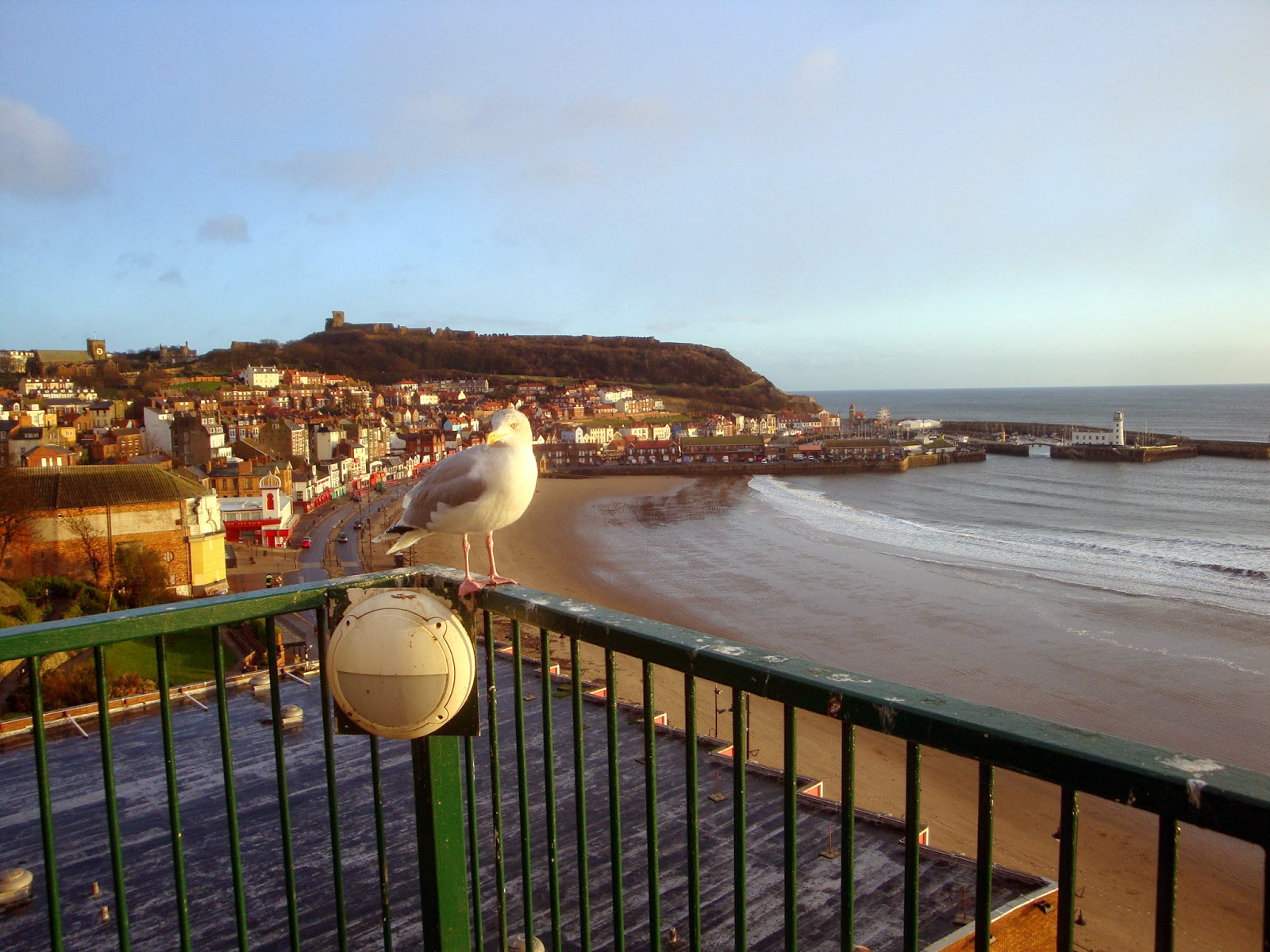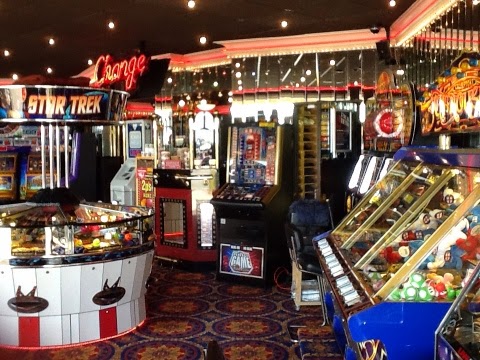The South Beach and Harbour
The views from The Grand Hotel are spectacular and there are steep steps alongside the building leading down to the foreshore.
Looking south towards the Spa
and north along the foreshore
Mc Bean Steps is one way down to the beach
A much easier way down is via the adjoining funicular, built in 1881,
with a 71m drop
The building at the foot of the lift, now an amusement arcade was formerly the site of The Olympia Ballroom a popular venue in the first part of the 20th century with its own dance band. It was also the venue for visiting 'big bands' when the likes of the Ted Heath, Joe Loss and Geraldo Orchestra's
appeared on a regular basis.
Built in 1894 the building was gutted by fire in the 1960's and was demolished.
Next to the lift is the Town Hall where nice gardens are situated down the slope with zig zag footpaths leading down to the foreshore.
The building was originally a private house built c.1846. The local council bought it later in the century. After alterations it was opened as Scarborough Town Hall in 1903 by Princess Henry of Battenburg who also unveiled a statue of her mother, Queen Victoria which still stands in the garden.
Down on the foreshore the south beach is skirted by Scarborough's 'golden mile' where there are amusements arcades, cafes and shops, everything for the holiday maker.

 |
Hi Ho, Hi Ho, it's off to work we go !
Blands Cliff is a steep road which leads down from the town to the foreshore but it is unsuitable for modern traffic.
There are many stepped passageways leading up to the town.
The brick building at the end of the beach is the life boat house. there has been a life boat station at Scarborough for more then 200 years and the crew have received many awards for gallantry.
Mouth watering products to come.
Fish and chips are of course a firm favourite with holiday makers and with the local McCain's factory for chips and the remaining fishing boats landing fresh fish, they are amongst the best in the country.
The lighthouse dominates the entrance to the harbour. Strange to say, it was demolished on 16th December 1914 when German battlecuisers bombarded Scarborough during WW1, before moving up the coast to Whitby and then Hartlepool. During the 30 minute raid under the cover of early morning darkness and mist, 18 people died and over 200 buildings were damaged or destroyed. Three years later Scarborough was again under attack when a German U boat surfaced off shore and peppered the harbour area with shells but little damage was done on this occasion.
Maybe this will deter any future invaders !
This 1914 Vickers Pattern 13 pounder gun was raised from the seabed in 1962 from the wreck of SS Hornbund which was torpedoed 2.5 miles offshore in 1917
The fish dock is a hive of activity early in the morning. You can also catch your own fish on regular fishing trips in the smaller boats.
Sea gulls are plentiful in this sea-side town and follow the fishing boats for discarded fish. Traditionally they nest on the castle headland but in recent years they have taken to nesting on buildings and like pigeons they are fast becoming g urban pests.
Apart from the fishing boats the harbour is home to small cargo boats and a variety of private boats. Boat tours round the harbour and the bay are very popular with the Hispaniola being a firm favourite. This 'pirate' boat was originally berthed at The Mere where a trip to Treasure Island was a popular attraction
and occasionally an old sailing ship
The 'Golden Mile' ends at the Pleasure Beach
The Lighthouse Pier (St Vincent's Pier) separates the inner and outer harbours.
This is where the pleasure steamer Coronia has berthed for many years.
Built on the Humber in 1935 the boat was soon commissioned by the navy in WW2 and was one of 'The Little Ships' which rescued retreating troops at Dunkirk and was later used during the laying of the PLUTO pipeline to deliver fuel to the Normandy beaches. In 1945 she was refitted and returned to pleasure duties at Scarborough.
The latest addition to this pier is The Diving Belle (2007), one of a pair of sculptures designed to celebrate Scarborough as the UK's first sea-bathing resort from the 17th century. The other sculpture, The Bathing Bell (2008) in is the town centre.

The outer harbour is used as a marina by private boats.
The harbour is now protected from the sea by a stout sea wall and by a modern rock armour barrier which reinforces the harbour wall.
The old coastguard house forms an entrance to the Marine Drive.
The rock armour stretches round the Marine Drive. This road around the castle headland was opened by The Duke of Connaught in 1908. The original toll was removed in 1951. The road provides a foreshore connection of some 2.5 miles from the Spa on the south bay to Peasholm Park on the north bay
|






.jpg)
.JPG)

.JPG)






















































No comments:
Post a Comment